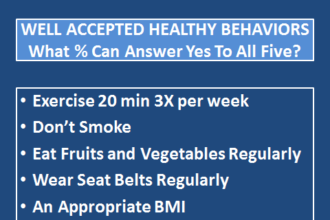Dr.
Dr. Len over at the American Cancer Society is raising legitimate questions about the early release of findings by the World Health Organization’s International Agency for Research on Cancer (IARC) that cell phone use may increase the risk of brain cancer (hat tip to Gary Schwitzer’s HealthNewsReview). The actual study — drawn from an analysis of “hundreds of scientific articles ” — won’t be published in Lancet Oncology “for a few days,” according to IARC. Says Dr. Len:
Unfortunately, drawing broad and sweeping conclusions based on a press release and a news conference leaves many of us wondering just what the evidence shows that led to the conclusion announced today that “radiofrequency electromagnetic fields” may be possibly cause cancer in people.
The evidence, when it appears, will be murky. A few years ago, I spent several months reviewing some of the evidence in this troubling field, largely from a conflict-of-interest perspective. The global telecommunications industry funds much of the science. Even when government agencies fund research, the results are difficult to interpret. The studies invariably involve looking for a very small number of negative health outcomes (brain cancers) in very large populations. Two researchers, looking at the very same set of epidemiological facts, will often come to different conclusions. And, as often as not, those conclusions correlate with whether the the researchers are independent or whether they are on industry’s payroll.
If you’re interested in keeping up with the issue of conflicts of interest that makes interpretation of the science of the health effects radio waves so confounding, there’s no better source that Lou Slesin’s Microwave News. As he reported last week, IARC threw a scientist off the committee on the eve of the week long meeting because he was an industry consultant.
IARC is an influential group. Its findings on carcinogenicity are usually given tremendous weight by regulatory agencies around the world, including the Environmental Protection Agency and the Food and Drug Administration in the U.S. The FDA and the Federal Communications Commission have so far rejected any link between radio waves and cancer.
In the early 2000s, environmentalists protested the industry’s role in IARC deliberations. Many of the experts chosen to sit on its panels were also industry consultants, and industry scientists often played a role in IARC proceedings. IARC promised to clean up its act by downplaying the role of industry-funded scientists on its panels, and publishing full conflict-of-interest disclosure information for its scientists. So I was pleased to see that in this latest study by press release, which offended Dr. Len, they at least published a full conflict of interest disclosure statement (see here). Remarkably, five of the 30 members of the committee had ties to industry, and that didn’t include chairman Jonathan Samet, a prominent American epidemiologist who over the past decade worked with industry (DuPont) on other issues.
I suspect that IARC’s tenuous conclusion — that cell phones “may” be linked to cancer — will be fully justified by the research. It also will be largely ignored by the public, since most people long ago learned to discount cancer risk stories when the chemical or technology involved is extremely popular.






